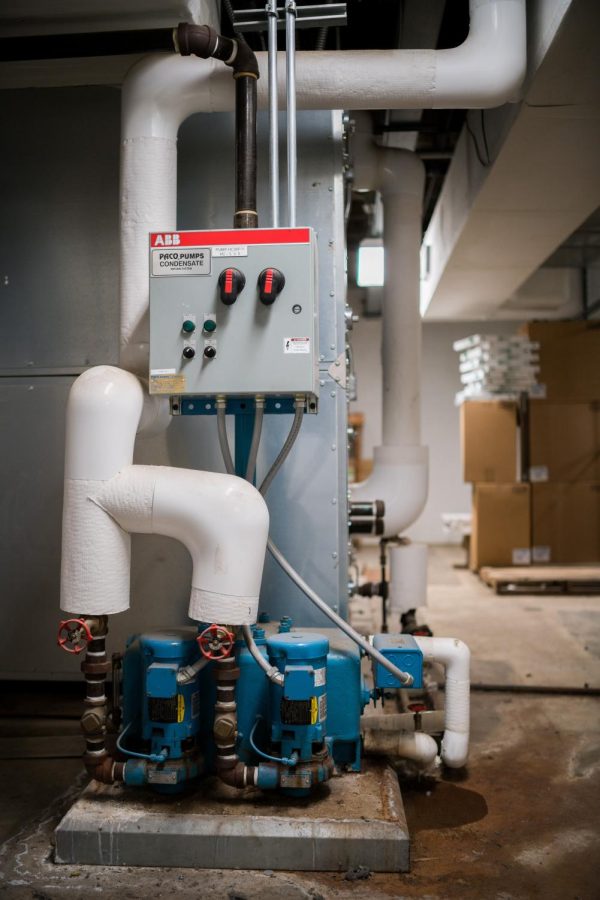Sustainable Infrastructure Project to Transition Campus Heating to Geothermal System by 2024, Faces Challenges
Central Heating Plant operates and distributes heating to dorms.
As part of a plan to achieve carbon neutrality by 2025, the College aims to transition building heating systems from steam to exclusively hot water for a more energy-efficient geothermal system, this change should be in place by 2024.
According to Chief Facilities Officer Kevin Brown, the temperature systems at Oberlin are undergoing large-scale transformations because of the enormous impact they have on Oberlin’s energy use.
“Heating is approximately 70 percent of our total energy use,” Brown wrote in an email to the Review. “Oberlin College takes this very seriously. The College remains committed to carbon neutrality by 2025. That is why we are investing the time, money, and significant effort into a new carbon-neutral heating and cooling district energy system.”
In the interim, multiple different heating systems are being used across Oberlin’s campus. While some dorms and Village Housing units use standalone heating systems, most campus buildings are still heated using the district energy system, which uses steam and hot water as heating mechanisms.
During the fall and winter, the Central Heating Plant, which operates and maintains the College steam plant and steam distribution system, is monitored by round-the-clock operators licensed by the state of Ohio.
“The temperature swings during the time following the start-up cause many calls to be placed to Facilities operations,” reads the Central Heating Plant Department webpage on the Oberlin College website. “Please be patient because the temperature will probably change the next day.”
According to Brown, there shouldn’t be too much inconsistency in heating and temperature within a building unless occupants tamper with the temperature systems.
“If an occupant impacts a thermostat’s effectiveness through use of a space heater or covering it up, that can cause temperature variations in other spaces within the same building,” Brown wrote. “Often, a single thermostat or temperature sensor can control multiple rooms or even an entire wing of a building.”
Heating in the buildings is triggered by the temperature outside. For buildings on the district steam system, temperatures must be below 50 degrees fahrenheit for several days for the heat systems to turn on. For buildings not connected to the district system, heating is triggered when the temperature falls below 55 degrees fahrenheit.
Students in certain buildings, however, not had to their heating turned on at all this semester. Despite temperatures reaching the 30 degrees fahrenheit range and snow coming in, students in Langston Hall do not have heat circulating through their dorm rooms.
“I am in Langston on the second floor, and we have no heat and that really sucks,” first-year College student Ella Bruzek said. “My bed is right up against the window, and I’m freezing all night. I am losing sleep because of this, which is making me perform worse academically. I have woken up in the middle of the night freezing. I even have four blankets, and I’m having to try to hang them against my window for insulation.”
Langston’s heat was shut off in early August, and residents are still waiting for it to be turned back on as the winter months approach.






